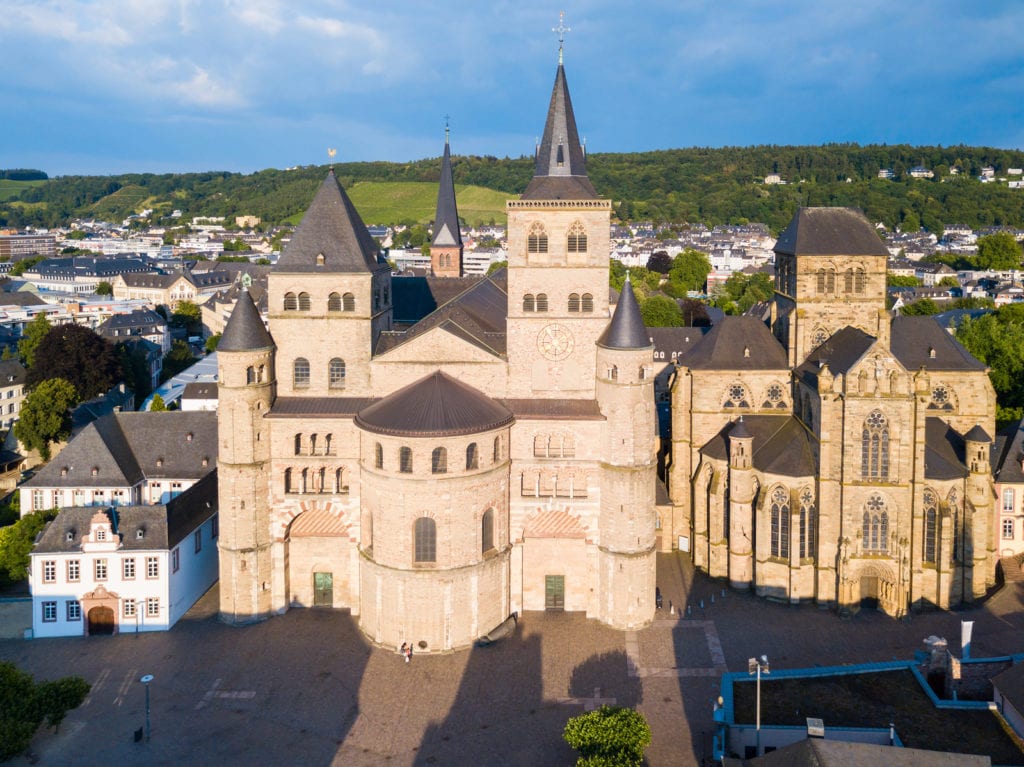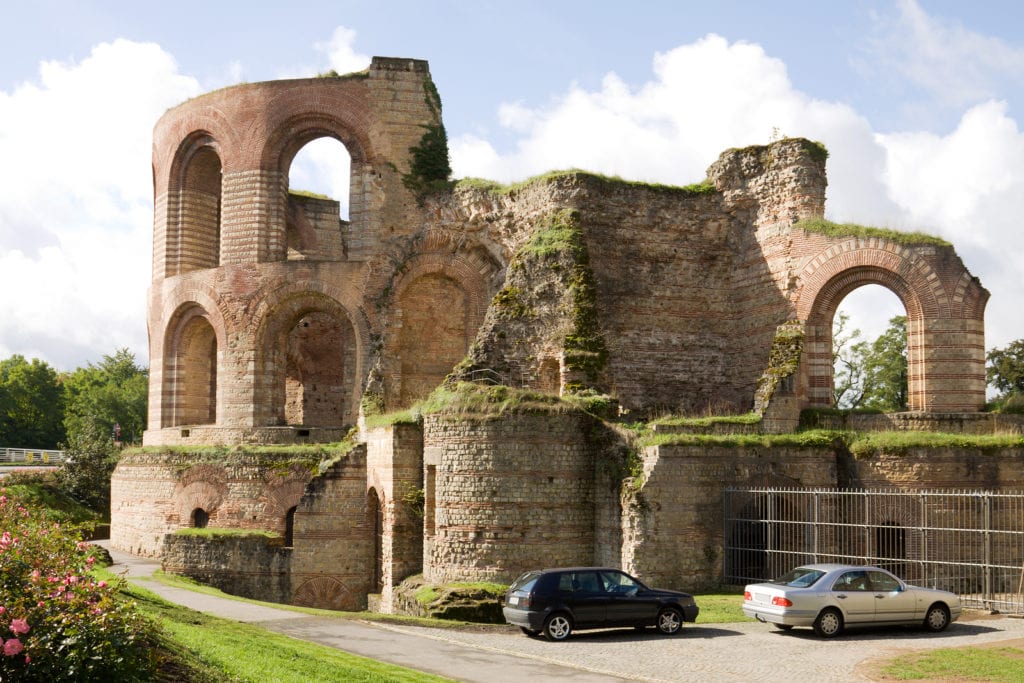Trier, located on the Moselle River, is one of Germany’s oldest cities and was also a Roman colony from the 1st century AD. The Roman Monuments, Cathedral of St. Peter and Church of Our Lady in Trier was declared a UNESCO World Heritage Site in 1986.
Brief History

During the early second century Trier was a great trading power and by the third century it was referred to as the “second Rome.” The quality of the preserved Roman monuments, the bridge, the remains of the fortified wall, and the Imperial Baths are the best examples of Roman architecture north of the Alps. The city, also being home to two of the most beautiful building achievements of that time, the High Cathedral of St. Peter and Church of Our Lady in Trier, is an excellent example of a large Roman capital after the division of the empire.

Nine locations in Trier constitute the UNESCO World Heritage Site listing: an Amphitheater, Moselle Bridge, Barbara Baths, Igel Column, Porta Nigra, Imperial Baths, Aula Palatina Basilica, High Cathedral of Saint Peter in Trier or Trier Cathedral and Church of Our Lady.
The Roman Monuments are unparalleled to any other that can be found north of the Alps. The structures build during the first and second century, Moselle Bridge, Barbara Baths, Igel Column and Porta Nigra, are all a testament to the robust commercial center that was Trier during the classic period.
The Cathedral of St. Peter is the largest religious structure in Trier, as well as the oldest church in Germany. Commissioned by Emperor Constantine and built on top of the palace of his mother, Saint Helen. The Cathedral of St. Peter survived being destroyed by the Franks, then rebuilt, and then destroyed again, in 882, by the Vikings. Its rebuilding started once again in 993 and throughout the centuries has been continually rebuilt and added on to. However, the overall style of the building remains Romanesque with a Roman core.
The Church of our Lady in Trier is the earliest Gothic Church in Germany and follows the architectural tradition of the French Gothic cathedrals. The original was a Roman double church but in 1200 the southern portion was destroyed and then replaced by the Early Gothic Church of Our Lady. It’s hard to know exactly how old the church is but a painted inscription found on an inside column states that the construction of the Church of Our Lady in Trier started in 1227 and was finished in 1243.
How to Get There
Given that everything is located within the city of Trier, you have more than just one way to reach them. Depending on the location of your accommodation, you can be there in as little as ten minutes.For example, the road from the Trier-Fohren Airport to the Cathedral of St. Peter and Church of Our Lady in Trier takes only around 26 minutes. If you visit Porta Nigra, the largest Roman gate north of the Alps, there will be just a 16 minute walk to reach the twin cathedrals. With the Roman monuments all around the city, most of which are impressive in their dimensions, it is quite hard for you to miss seeing this UNESCO World Heritage Site.
Things to Do when Visiting the Roman Monuments, Cathedral of St. Peter and Church of Our Lady

When visiting the Roman Monuments, Cathedral of St. Peter and Church of Our Lady, there are a couple of things that you definitely don’t want to miss. For example, the Cathedral of Saint Peter hosts a treasury room where you can see a nail that affixed Christ to his Cross, a piece of the True Cross, chains from St. Peter, as well as St. Anthony’s sandal.If you go a little further, you’ll find the reliquary behind the altar and you may have the chance to gaze upon Christ’s cloak.
Basically just enter Trier and the World Heritage Site is everywhere around you. The entire city stands as testimony to the Roman civilization in Germany, both in terms of the quality and density of the monuments.







